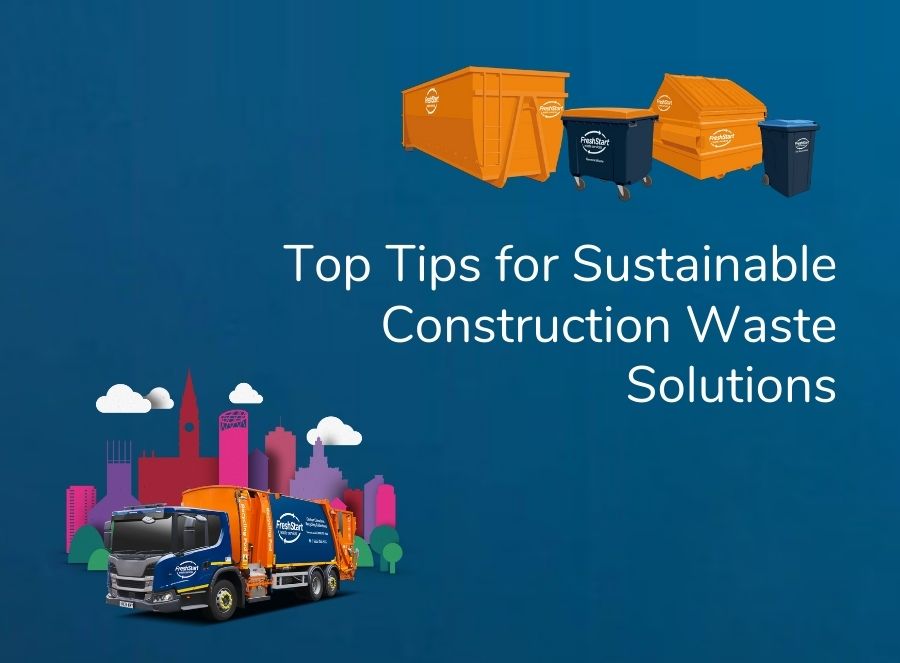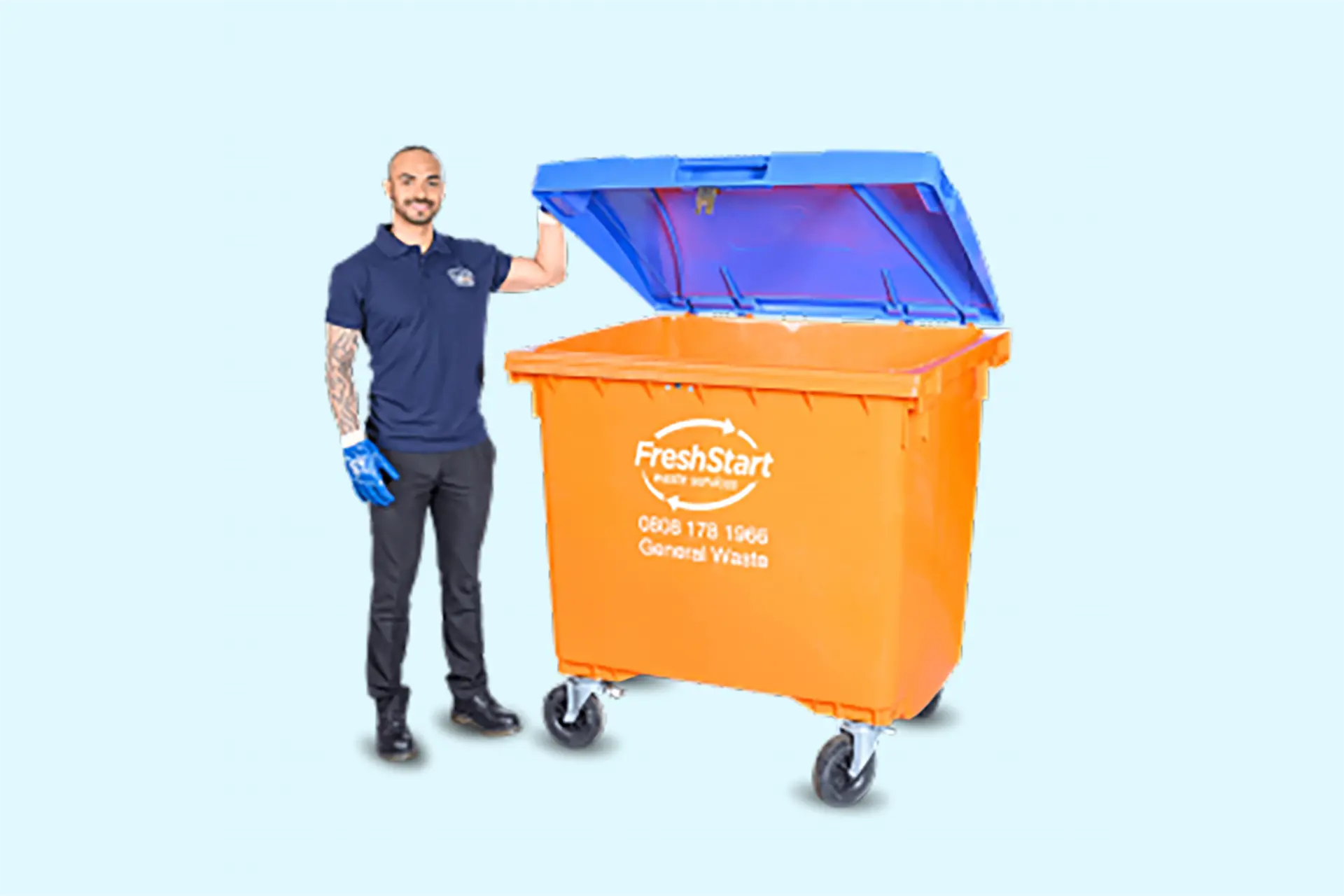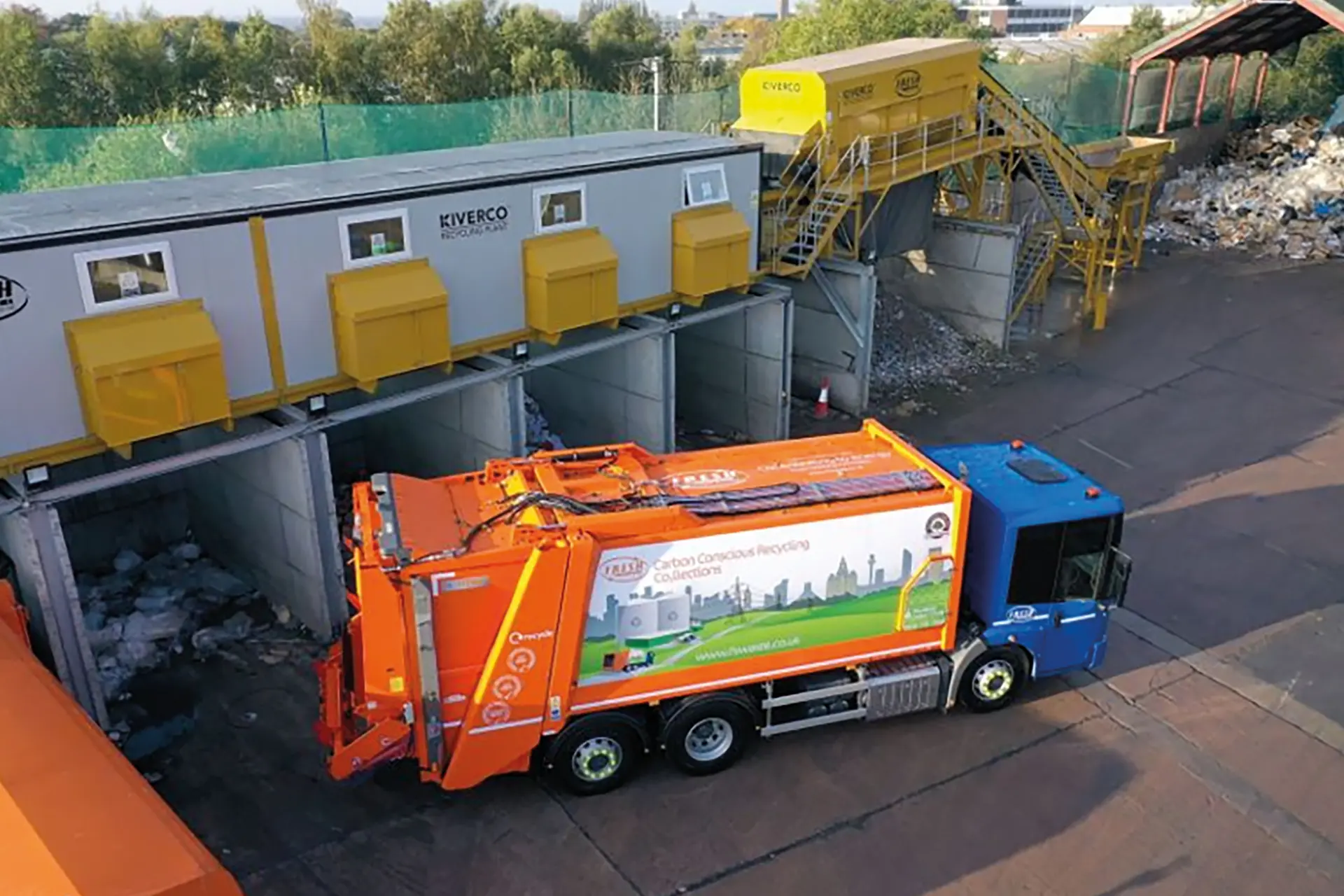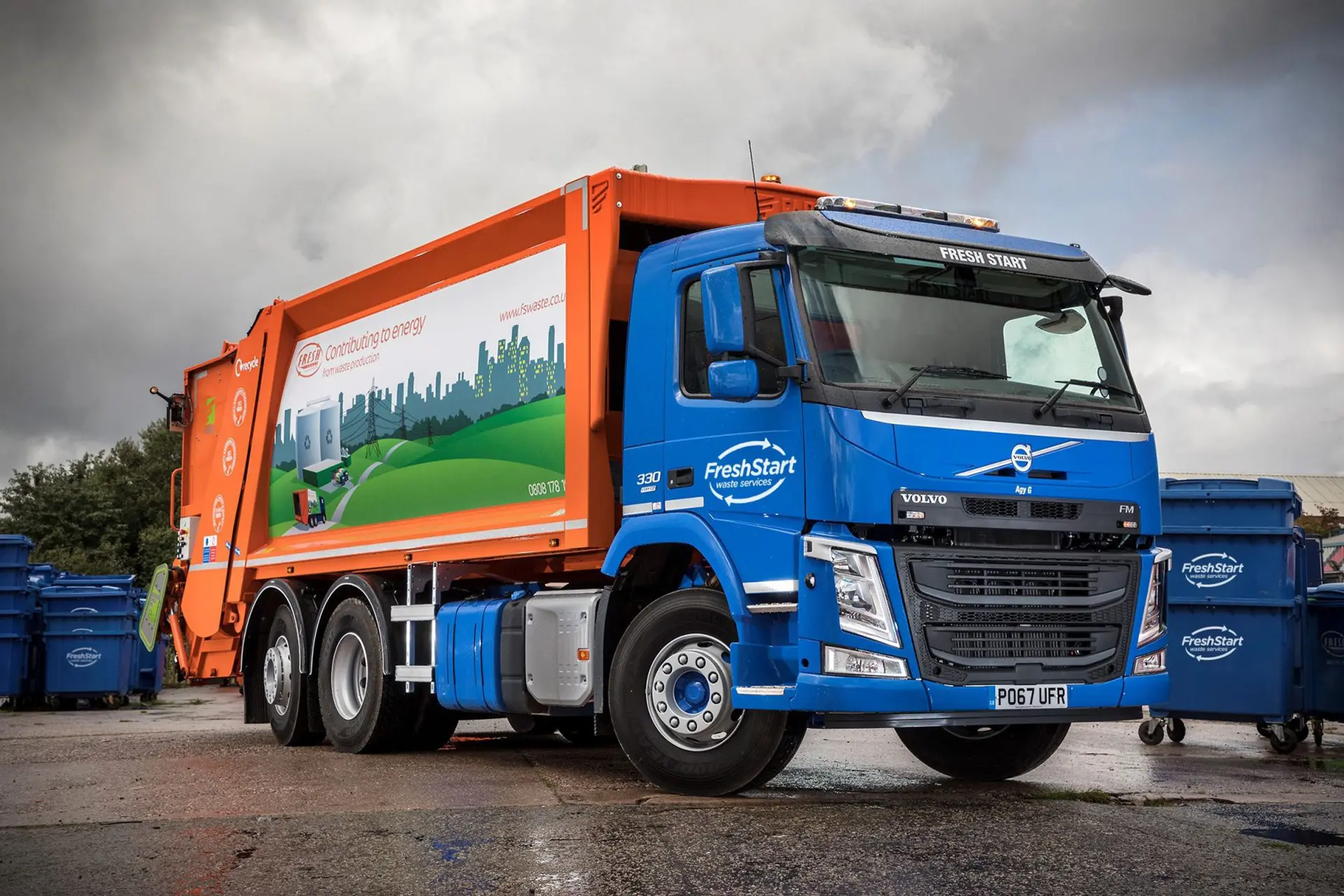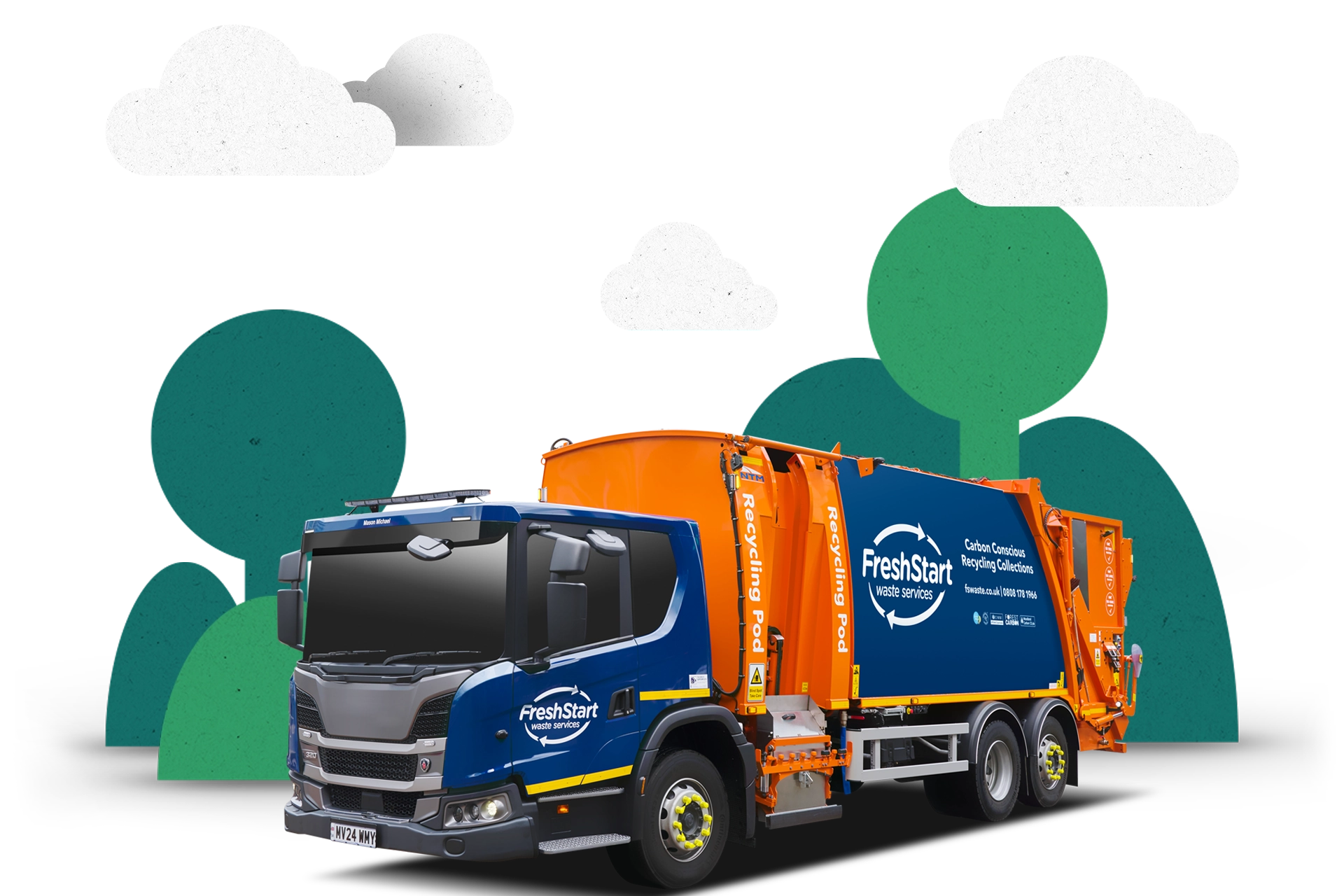Group A
RUSSIA:
The host nation has a somewhat old fashioned view of recycling. Often seen as the preserve of alcoholics, drug addicts and old ladies who are looking to scrape together a few roubles, household waste is often left in stairwells for the less well off in society to rifle through.
Any recyclable materials are then collected and sold on, and although this method is used throughout many parts of the world, there needs to be a sea-change in attitude for recycling to be taken seriously in Moscow and beyond.
Only 4% of municipal waste is recycled at the moment, with around 80% heading directly to one of the country’s many landfill sites – which combined are the size of Switzerland – with most of the rest being incinerated.
SAUDI ARABIA:
Official figures are tricky to come by for the amount of municipal Saudi Arabia recycles, but it’s believed to be in the 10-15% bracket.
This is because the majority of waste collections are done on an informal basis, ie, many local authorities may not collect rubbish at all, and it’s left to private individuals or small firms to keep the streets free of bins bags.
It’s estimated that up to 40% of waste is eventually recovered by scavengers picking through landfill sites, but there is no nationwide strategy for waste in place at the moment, or seemingly on the horizon.
EGYPT:
Egypt has been embroiled in a waste war with a section of its own people since 2003. That is when the government awarded waste collection contracts to three multinational companies – prior to this, organised domestic routes had been few and far between.
One consequence of this was that the Zabbaleen (which translates as “garbage people”) had a sudden threat to their livelihoods. Collecting waste door-to-door for decades, they had made their home suburb of Mokattam a hub of recycling activity.
Official municipal figures are sketchy, but the Zabbaleen manage to recycle around 80% of the thousands of tonnes of trash they gather from Cairo each day. It is separated it into 16 different streams, and either sold, made into something else, or fed to their pigs.
They only operate in the Greater Cairo area with the rest of the country have a much lower rate of coverage.
URUGUAY:
The small South American country still hasn’t embraced recycling, with a skeletal waste collection infrastructure in the capital city, Montevideo, and practically nothing elsewhere.
Montevideans generate around 1,200 tonnes of municipal waste per day, and while about two-thirds of that is eventually recovered in one way or another by ‘clasificadores’ (informal waste collectors), 400 tonnes goes directly to Uruguay’s already choked landfill sites.
While designated recycling containers are available in the county, they are often under-used, or have unsorted general waste put into them, making the little recycling that goes on that bit more inefficient.
GROUP A WINNERS: Egypt.
Despite there being no official statistics, the herculean efforts of the Zabbaleen mean that they recycle at least 1.5 million tonnes of Cairo’s waste every year, and that really is a conservative estimate.
Group B
IRAN:
Life as a waste collector in Iran can be a dangerous business. While municipal provisions do exist, some of the poorest people in the country’s society sort through bin bags and containers for plastic, metal, paper and anything else with a recyclable value.
Competition is fierce, and a black market worth millions of dollars (to those at the top of the ‘dirt gold mafia’ food chain) has sprung up around what are illegal scavenging activities. Materials are sold from one middle man to the next until the baled loads are ultimately sold to China or Pakistan for processing.
The best estimates for Iran’s legal recycling rate is between 1-2%, with energy recycling clocking in at just shy of 4%.
MOROCCO:
Up until 2007, the waste business in Morocco was almost entirely unregulated. Recycling amounted to teams of ‘chiffoniers’, who would scour dangerous landfill sites, often in bare feet, for anything of value to sell on.
This changed when the country’s largest waste management site became a cooperative of 150 workers, complete with a steady monthly wage and health insurance.
The most recent figures show a nationwide recycling rate of 5%, but this is increasing rapidly, and the government in Rabat are aiming to push this figure well beyond 20% by 2022.
One advantage Morocco potentially has over its European neighbours, is that around 60% of the waste it generates is organic and readily recyclable or fairly easy to convert into biogas, compared to ~30% on the other side of the Strait Of Gibraltar.
PORTUGAL:
Portugal’s recycling rate of 29% doesn’t sound all that impressive when compared to other countries on the continent, but when you consider that it was as low as 8% in 2002, they have made tremendous strides.
The EU has set a recycling target of 50% for its member nations to reach by 2020, and although Portugal in all likelihood won’t attain this, it joins the UK, Italy, Lithuania and Poland in increasing their share by more than 20 percentage points in a decade.
These figures aren’t without controversy, though, as the government has been accused of publishing misleading data, with more than a quarter of a million tonnes of refuse which had been incinerated or sent to landfill counted as being recycled.
SPAIN:
As well as marked cultural differences from region to region, Spain is just as varied when it comes to its attitude towards recycling.
The overall 33% MSW recycling rate is comfortably below the EU’s average of 45%, but La Rioja province in the north of the country is boldly leading the way, and recycles in excess of 50% of its waste.
Elsewhere, the Canary Islands, Galicia and Madrid itself all find themselves struggling at less than 20%. There are thousands of visible recycling bins on the streets, but that infrastructure may need to be brought more into homes for it to really take off.
GROUP B WINNERS: Spain
…but only by default. Portugal may well have overtaken it by now (the last official figures are from 2014), and Morocco is a trailblazing country for African and Arab nations. With most of its energy already coming from renewable sources, it could very well catch up its closest European neighbours within a decade.
Group C
AUSTRALIA:
On the face of it, Australia’s 41% municipal recycling rate is a solid effort, but has faced criticism from some quarters, as around 30% of their waste is exported to China for processing there instead.
“If you collect rubbish and ship it to China that’s not recycling, that’s just collecting.” according to UCLAN’s Prof. Karl Williams, speaking to The Sydney Morning Herald recently.
How China’s new laws restricting the import of lower grade waste products will affect these figures is yet to be seen, but it has been cheaper for many ‘western’ countries (including the UK) to export a certain amount of their recyclable waste to the far east than to recover the materials at plants at home.
DENMARK:
Denmark has long been global leaders when it comes to their green efforts. It was the first country to introduce recycling laws in 1978, which stated that 50% of food and drink packaging must be recycled.
Although Danes generate more waste per person than anywhere else in Europe (758Kg per year), their recycling rates are often through the roof – along with Norway, they reuse 98% of their glass waste.
It may be baffling, then, that Denmark’s municipal recycling rate is only 44%. This is down to how recycling is measured, as organic waste incinerated for fuel doesn’t count, and is a problem also encountered by Sweden.
As if to prove just how ecologically aware the authorities in Denmark are, Ørestad, a suburb of Copenhagen, is currently being rebuilt by using materials recovered from abandoned houses, complete with green roofs, and toilets assisted by gathering rainwater. Even the old Carlsberg Brewery building has been commandeered, with the majority of its bricks being given a new lease of life after its demolition.
FRANCE:
France’s progress up the recycling ladder has been steady rather than spectacular, with 39.2% of their municipal waste being recycled at the last count in 2014.
This is up from 34% five years earlier, and has set bold aims of using 100% recycled plastic by 2025, although barely a quarter of it is currently in that category, a similar figure for the total amount of household waste which finds its way into the recycling economy.
PERU:
Only a fraction of Peruvian waste is collected formally, but considering the country’s unique geographical challenges, it’s perhaps not too surprising that organised recycling schemes are hard to come by.
Sandwiched between the Pacific Ocean, the towering peaks of the Andes, and the dense jungle of the Amazon rainforest, around 70% of Peru’s waste is disposed of ad hoc, with a significant portion being dumped untreated into rivers and other waterways.
As is common throughout South America, recycling is largely done by groups of litter pickers, who finally became legal in 2009 thanks to the ‘Law Of The Recycler‘, which gave them protection from police harassment and access to specific vaccination programs.
The MSW recycling rate is now up to around 12%.
GROUP C WINNERS: Denmark
Even though they’ve been hampered by what is and what isn’t classed as recycling, The Danes are the clear winners in Group C. Go Denmark!
Group D
ARGENTINA:
Although it is one of the most developed nations in South America, Argentina isn’t immune to the issues surrounding waste management that its neighbours also have to contend with.
Organised collection routes are rare outside Buenos Aires, and 95% of what is recovered from the streets is picked up by around 5,000 ‘cartoneros‘ – people who collect recyclable materials, but were illegal in the county up until 2002 – rather than waste companies.
A Zero Garbage law came into effect in 2005, but was ignored to the extent that provinces next to Buenos Aires started to reject the city’s waste from being dumped on them in 2012. The municipal recycling rate is thought to be 11%.
CROATIA:
Croatia has started on its recycling road from a long way back. A quarter of its cities still don’t have facilities for separating waste into recyclable streams, so the vast majority of recoverable items go directly to landfill or incineration.
Since joining the EU in 2013, however, they have been allocated funds of around £20m to help set up proper schemes. The most recent official figures show the country recycling 16% of its MSW, although that number appears to be rising fast, with recent estimates showing it to be above the 20% mark.
ICELAND:
Recycling has been surprisingly slow to take off in Iceland, with half of all household waste being sent straight to landfill sites. The capital city, Reykjavik, has noticed an increase of rubbish in bins, thanks in part to its increasing popularity as a tourist destination, but it hasn’t been able to do too much about it.
This is because there are no large scale industrial recycling facilities in the country, with paper being sent to The Netherlands, plastics to Sweden, and glass going to landfill as it’s not cost effective to ship it abroad.
That said, ~83% of Iceland’s glass, 90% of aluminium and 87% of PET is recycled thanks to a nationwide deposit scheme for bottles and cans.
NIGERIA:
There is no reliable recycling data for Nigeria as a whole, but Lagos, Africa’s largest city with a population of 21m inhabitants, has roughly 13% of its total waste separated out.
Only 40% of the rapidly expanding city’s rubbish is collected, with the rest being left on the streets. This is where the Wecyclers step in, or more accurately, ride in.
Their work is hugely important, especially in lower income areas where malaria can thrive, and their cargo collection bikes have become a familiar sight in the city since setting up shop in 2012. They provide a free service to households, and as well as helping to keep the city tidy, they recover and sell a huge amount of recyclates.
GROUP D WINNERS: Iceland
Iceland have cruised over the line in Group D with a 30% municipal recycling rate, although the lack of large scale recycling means that they still lag some way behind their Nordic neighbours.
Group E
BRAZIL:
The official municipal waste recycling level in Brazil is a mere 3%, but that doesn’t tell anywhere near the whole story, and the overall figure is likely to be much higher once unofficial sources are factored in.
As with most of Latin America, organised waste collections are very thin on the ground outside the wealthier parts of the bigger cities, so keeping the streets tidy is pretty much left to the residents.
There are thousands of PEVs (Voluntary Delivery Posts), where people drop off their waste, while waste pickers tenaciously recycle anything with value, to the extent that Brazil recycles a higher percentage of aluminium that anywhere else on the planet: 98% of it.
COSTA RICA:
Often seen as an eco-tourism paradise, Costa Rica has a major problem with its waste.
The world’s largest exporter of pineapples has pristine landscapes as far as the eye can see, but a serious under-investment in infrastructure means that just 0.4% of waste is recycled through official channels.
A multi-bin system was introduced in 2010, but the Costa Ricans have been slow to adopt it, and it’s still far more common for household waste to be burned or even buried than sent to be recycled.
As with elsewhere in the region, many of the poorest in society eke out a living by reclaiming saleable items from hazardous dumps.
SERBIA:
Recycling is an activity which had largely passed by unnoticed in Serbia until the last few years.
The county had a MSW recycling rate of only 1% in 2014, with only Turkey (1%) and Bosnia & Herzegovina (0%) having comparable levels in Europe.
The government has ambitious aims of reaching a 50% threshold by 2030, which would be an incredible achievement from such a standing start, but recent unofficial figures indicate that their current levels may be as high as 8%.
While the situation appears to be improving rapidly, there are still areas of the country which have no recycling facilities, and attempts to introduce them have been piecemeal.
SWITZERLAND:
One of the big hitters in the world of recycling, Switzerland has been particularly keen on the ‘polluter pays‘ principle.
This isn’t just aimed at businesses, either, but each household is charged by how much waste it generates. As the Swiss are only behind Denmark in the average amount of refuse created in Europe (730Kg per person, per year), it may not come as too much of a surprise to learn that their recycling rate is 54%.
They don’t want to stop there, though, and have set a goal of 60% by 2020.
GROUP E WINNERS: Switzerland
While they may not be known for their innovations on the football pitch, Switzerland have been at the forefront of recycling for decades, and have been at the forefront of recycling for decades, and have sauntered through Group E.
Group F
GERMANY:
Recycling is a way of life in Germany, and with most citizens proud to do their bit by streaming their waste into six different bins, it means that the EU’s most populous country has a municipal recycling rate of 66%.
Things started to take shape in the early 90s, when a new law was introduced which meant that manufacturers were responsible for the recycling of all packaging waste that they produce. That included any used in the transportation of goods, as well as what the consumer receives.
It should be noted that the MSW rate includes composting, of which around 17% of Germany’s waste is turned into soil and fertiliser (neighbouring Austria is top of that particular table, processing up to 40% of its waste that way), although more than a third of it is still incinerated.
SOUTH KOREA:
South Korea has taken recycling under its wing more than any other Asian nation. With a municipal recycling rate of 59%, it has improved beyond all recognition since the mid-80s, when in excess of 90% of its waste was dumped in landfill.
The moves to modernise their waste management industry began in earnest in 1986, when the country’s first major waste law was enacted. Since then, a polluter pays method has come into force, with food waste being a particular focus in homes, and hefty fines if the regulations are not adhered to.
This has given rise to an 80% total recycling rate (this includes materials which are recycled before they reach the consumer, ie, in manufacturing or construction), and less than 10% of waste heading to landfill.
MEXICO:
As we’ve already discovered, South and Central American countries typically don’t have widespread organised waste collections in place, particularly in rural areas, slums or the low-income outskirts of cities.
Mexico has the additional problem of crime cartels controlling much of what is collected. The waste industry there is currently worth around $3bn per year, and largely relies on ‘pepenadores’ to pick through the refuse which is left on the streets. This is then sold onto middle men who in turn deal with recycling companies.
Looking to step into the breach are social enterprises such as Protrash, who aim to help those in poverty get a fairer price for any recyclables they save or collect, while educating people about the environmental impact of garbage.
Mexico’s recycling rate currently stands at c. 3%.
SWEDEN:
On the face of it, Swedes are quite possibly the world’s greatest recyclers. Initiatives down the years have propelled the country’s household recycling rate all the way up to 99%+, but as with Denmark (and to a certain extent, Germany), however, there is a problem.
Half of this carefully streamed refuse is burned to create fuel. It’s a relatively cheap way of producing energy, and Sweden even imports around 3 million tonnes of waste per year to keep their fires burning, but this method isn’t considered to be recycling by the stat-gatherers at the EEA or to most environmentalists.
This extends to what is counted by the Swedish government as recyclates, with otherwise non-recyclable waste also being included in the incineration figures. That said, a ‘true’ municipal recycling rate of 50% and minimal rubbish going to landfill is still definitely not to be sniffed at.
GROUP F WINNERS: Germany
Every World Cup has one, and this has proven to be Fresh Start’s Group Of Death. South Korea and Sweden would have romped clear in most of the others, but Germany’s lower reliance on incineration has seen them top the tree here.
Group G
BELGIUM
Belgium has an outstanding MSW recycling rate of 55.1%, but this is down from 57.7% in 2010, showing one of the few dips on the continent. On the other hand, Belgians send fewer waste to landfill or incineration than any other European country, at less than 200Kg per person.
Part of the reason for this is that home composting is widespread, particularly in the Dutch-speaking province of Flanders. Composters were handed out for free at one stage, overseeing a significant drop in food waste being landfilled. Indeed, Flanders had an overall household recycling rate of around 65%.
Belgium is split into three distinct regions, however, and the other two have got plenty of catching up to do. The Brussels Capital Region introduced a € 625 levy for non-compliance with a mandatory waste separation programme in 2010, but the recycling rate is still as low as 23%.
The French-speaking region of Wallonia in the south of the country has made the biggest strides, from recycling just 15% in 2006 to 37% in 2014.
ENGLAND
With numerous campaigns against the irresponsible disposal of rubbish going right back to the days of bottle deposit schemes in the 1960s (which are due to return soon), Keep Britain Tidy, and the ‘make do and mend’ attitude which was prevalent when rationing was introduced, England has always been willing to step up to the recycling plate.
The biggest issue was the lack of infrastructure to make mass recycling a reality, with most councils not introducing separate kerbside collections for recyclable materials until well into the 2000s.
This saw a spike in recycling activity, with England’s municipal recycling rate jumping from around 23% in 2004 to being just shy of 45% now. It isn’t the leading country in the UK, though, with Wales leading the way on 57%. Scotland and Northern Ireland both weigh in at 43%.
PANAMA
It is estimated that 5% of MSW is recycled in Panama, but Central America’s isthmus nation has been put under increasing strain thanks to a rapidly increasing population and a 50% increase in waste production in the past 20 years.
Plastic bags are a particular problem, washing up in droves along Panama’s Pacific and Atlantic coastlines, while their waste management industry is starved of funds. This is because what waste collections there are, are charged as part of water bills, of which on 8% are paid up on time.
Successive Panamanian governments have looked at introducing various measures to help without much success, and there are still people streaming refuse at hazardous landfill sites, where fires occasionally break out.
TUNISIA
Tunisia is a country of two halves when it comes to recycling provisions. Roughly 80% of waste is collected in urban areas, but away from the larger towns and cities, only 10% of it is formally picked up.
That said, collecting garbage is one thing, actually doing something useful with it is quite another and Tunisia unfortunately just doesn’t have the infrastructure to recycle on any kind of scale at the moment.
More than 90% of the North African country’s refuse ends up in landfill sites, the majority of which don’t meet their own environmental and sanitary standards. However, their MSW recycling rate of 9% (5% compost, 4% recycled) is still stronger than many other nations in the region.
GROUP G WINNERS: Belgium
Despite much of the rest of the country lagging behind, the citizens of Flanders have hauled Belgium over the line in Group G.
Group H
COLOMBIA
In common with most of the countries in the region, waste management in Colombia isn’t as developed as the authorities would like. Of the refuse which is dealt with legally, much of it is sifted through by local recyclers before being collected by regular bin lorries.
From there, only around 7% of trash avoids going to the country’s ubiquitous landfill sites.
Although dumping waste in non-certified sites and waterways was made illegal in 2005, the Bogota River which runs through Colombia’s namesake capital is hugely polluted, with the city’s untreated water waste being pumped directly into it.
JAPAN
In the UK, ice cream vans play a jolly tune to let everyone know that frozen treats are just a few yards away. In Japan, waste wagons do exactly the same, although as this video points out, they don’t sell ice creams.
People in Japan are fairly enthusiastic about recycling – 98% of paper and 96% of glass are separated out at home – and the government has introduced a 12 bin system which covers almost all eventualities. Broadly speaking, though, they fall into two main categories: burnable, or not burnable.
That said, a surprisingly low 21% of waste is recycled. This is down to the widespread incineration of garbage, combined with wrapping individual pieces of fruit, veg and other perishable foodstuffs in non-recyclable plastic.
POLAND
Poland is in the midst of a recycling revolution. With rates of recovery as low as 6% in 2004, successive statutes have been introduced to encourage its citizens to separate their waste, culminating in several laws in 2012/13 which put the responsibility for collection back on local authorities.
Prior to this, each household had to make its own arrangements with waste management companies, which encouraged a race to the bottom, corners being cut, and countless tonnes of refuse being illegally disposed of.
This pushed Poland’s MSW recycling rate up to 32%, and with the EU requiring that figure to be 50% by 2020, new legislation has been introduced to streamline and simplify the current process. The mishmash of each city having different coloured bins for different types of waste (like in the UK) is being phased out, and a nationwide standard being brought in.
SENEGAL
Waste management in Senegal is no longer centralised, so each local region now has to make its own provisions.
This presents huge problems for cash-strapped authorities, and with funds thin on the ground to begin with, it’s often left to people at the bottom of the socio-economic pile to sift through bin bags for anything salvageable.
The issue is perhaps most starkly portrayed in this blog by a relatively well-off Dakar resident, which describes various easy ways of helping those in a less fortunate financial position. It includes having a two bin system; one for real rubbish, the other for people to scavenge through.
GROUP H WINNERS: Poland
Even though Japan has musical bin lorries, Poland’s massive progress over the past decade sees it take Group H at a canter. Whether the latest initiatives will help it to the 50% threshold in time remains to be seen, but the country’s improvement is the largest in the whole of Europe.
FRESH START WORLD CUP WINNERS:
With all the results in, we can officially crown GERMANY as the inaugural Fresh Start Recycling World Cup winners for 2018.
Their 66% Municipal Recycling Rate is streets ahead of runners-up, South Korea, whose 59% seems set to increase significantly over the coming years. Belgium pick up the bronze medal on 55% despite Brussels itself struggling, although it’s worth noting that Flanders would’ve finished in 2nd place on its own.
Of course, comparing developing nations to those which already have a comprehensive recycling infrastructure isn’t particularly helpful. It’s not even close to being a level playing field at the moment, and although they’re still some way behind, countries such as Morocco are introducing innovative methods to combat their waste issues.
As the EU’s directive that 50% of all municipal waste must be recycled by 2020, these figures will doubtless change for the better by time the next World Cup rolls around in 2022. The host nation, Qatar, is taking steps to improve ways of dealing with its refuse, and as one of the highest waste per capita generators in the world, it is obvious that it can’t landfill 90% of its waste indefinitely.






